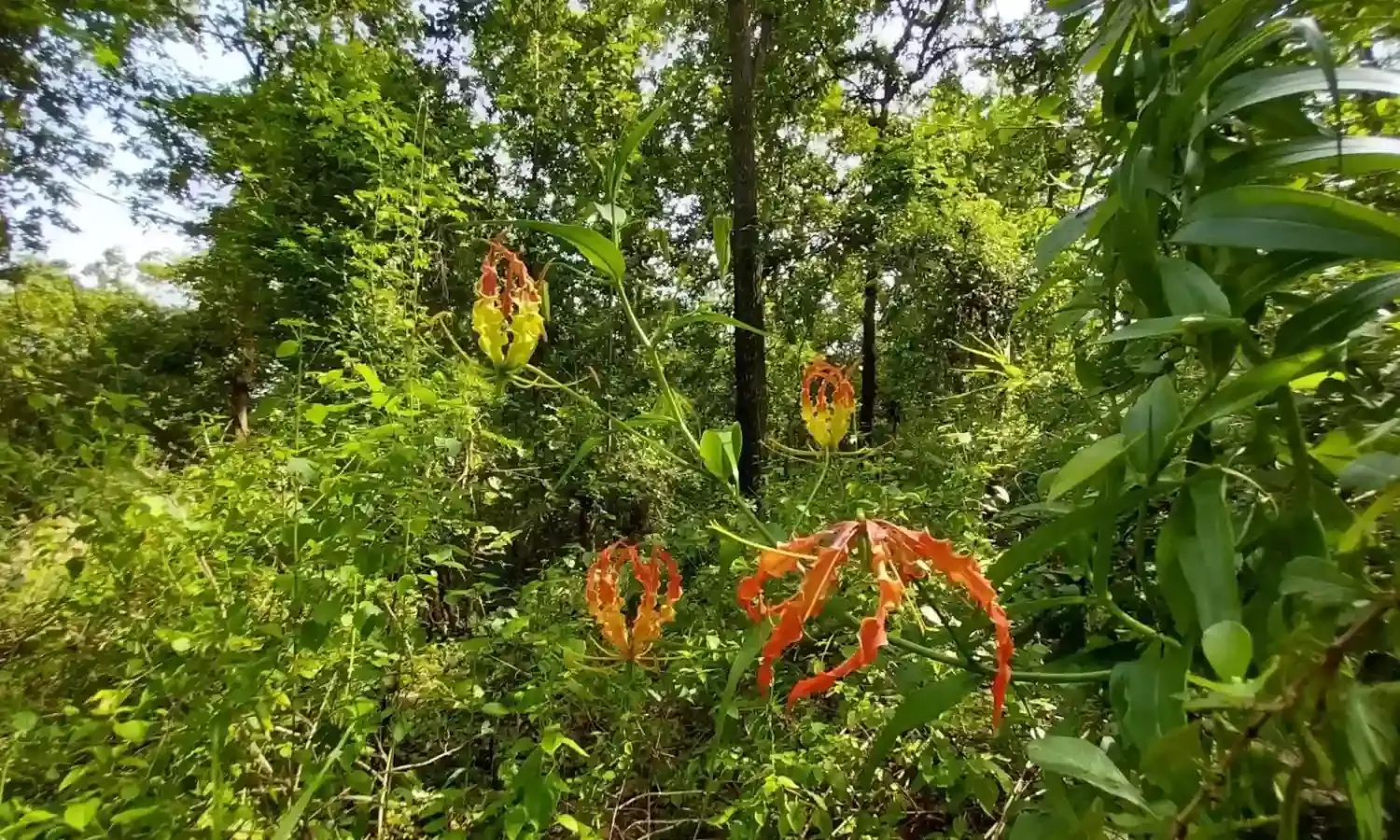A Walk Through Kanha
Photo story

On a fine morning, a foot trail started with Karan Armu, a youth from the village of Bamhni which lies in the buffer zone of the Kanha Tiger Reserve.
Within a few minutes, Karan pointed out a Saja tree which is worshipped by Gond Adivasis for good rains before the advent of the sowing season. Its leaves are used to make plates.
The Bamhni nature trail is a haven for birdwatchers. “Tourists who prefer my company either love walking or birding. But most prefer Gypsy rides as they feel uncomfortable walking inside a tiger reserve. I also have personal guests.”
Karan, who used to feel nervous of tigers initially, is now comfortable with his walks and says he would never go in a Gypsy. Safari guides Dhanti Maravi and Ramkali Dhurwey displayed their knowledge of the forest as they pointed out edible mushrooms during the trail.
Though always on vehicles for safaris, they would not mind leading tourists on walks. This was the first time they had come on a foot trail. The two have completed more than a decade in Kanha, and are among 12 women safari guides at the reserve. During peak season they take home about Rs 20,000 to 25,000 a month. Initially it was tough as the women faced taunts. “How will you sit with men in the vehicles? was a constant jibe thrown at us. But we tolerated as jobs are hard to get.”
Ramkali’s parents were from Sondar, a village displaced in the 1970s citing conservation of the barasingha swamp deer. “The residents of Sondar used to work outside due to the lack of agricultural lands,” she says, adding that the government did not recompense people it displaced back then, and resettled them in open spaces.
“Problems cropped up in the beginning but gradually villagers adjusted with the relocation idea. After being displaced from Sondar, some went outside Kanha while others settled down in Mukki village which is near the gate of the same name. Now, locals are earning through various opportunities.” Like Karan, both women belong to the Indigenous Gond community.
On the way an orange mushroom is spotted, locally called the Sarai Pihiri. Kanha is famous for mushrooms. “Our parents taught us about mushrooms. Though some are poisonous there are others delicious to taste. The black coloured mushroom called Putpura is much preferred during the rains,” says Dhanti while Karan and Ramkali bent to show the hoof marks possibly made by a gaur or a sambar. All three agree that most tourists only want to see tigers and pay no attention to anything else around them.
We cross a nullah slowly because of the moss-covered ground. The women say the nature of their job has turned them into early birds. They wake up at 7am and in October as early as 4am.
Dhanti, who shares a rented accommodation with her sister in Mukki, has two children. Unfortunately, she lost her husband in a road accident. Ramkali lives with her parents in the same village. Her husband stays at a village 20km away where he works as a school teacher.
At one point during the walk, the Banjar river with its muddy swirling water came into view. It was then Karan narrated his hair-raising experience of an encounter with a tiger, while he was leading three foreign tourists.
Even though the Bamhni nature trail lies in the buffer, sometimes animals do cross over. While the general perception is that tigers are hard to see in the monsoon, he has seen the maximum number of tigers during that season. “The tiger evaded spotting for a while even though animals sounded alarm calls. I told my guests to wait under a bamboo thicket and climbed a Kusum tree to scan the area. After I climbed down, my guests shouted that the animal was behind me. It just walked away but the tourists felt scared and abandoned the walk,” the guide recounted.
Crossing a small bridge on the 8km long Bamhni trail, Karan showed a Kalihari, a pretty red flower like the lily, offered in worship. A rock climb somewhere after 4km offered a spectacular view of the Banjar river. Karan pointed out an ornamental tree trunk spider. Further away, a signature spider was also spotted. The three guides pointed out Arjun, Chironjee and Indian ghost trees. Dhanti showed a Haldu tree whose bark is consumed by the gaur.
At a place on the ground, violet Lajwanti plants looked beautiful. The ground in many places was covered with dried Sal leaves. The women explained that forest fires in a Sal patch are easy to control compared to a bamboo thicket, where the blaze spreads fast due to almost no space.
Besides the Bamhni nature trail, the canopy walk which is relatively short also offers a beautiful view of Kanha. A walk along this route with the Banjar river in view revealed a few anglers.
Dhanti and Ramkali were familiar with the route and accompanied me as safari guides in the core area close for three months during the monsoon. “While Karan works throughout the year on the Bamhni trail, we have to wait till the park reopens,” said Ramkali. Both wished the forest department would think of something for core area safari guides in the lean months.



